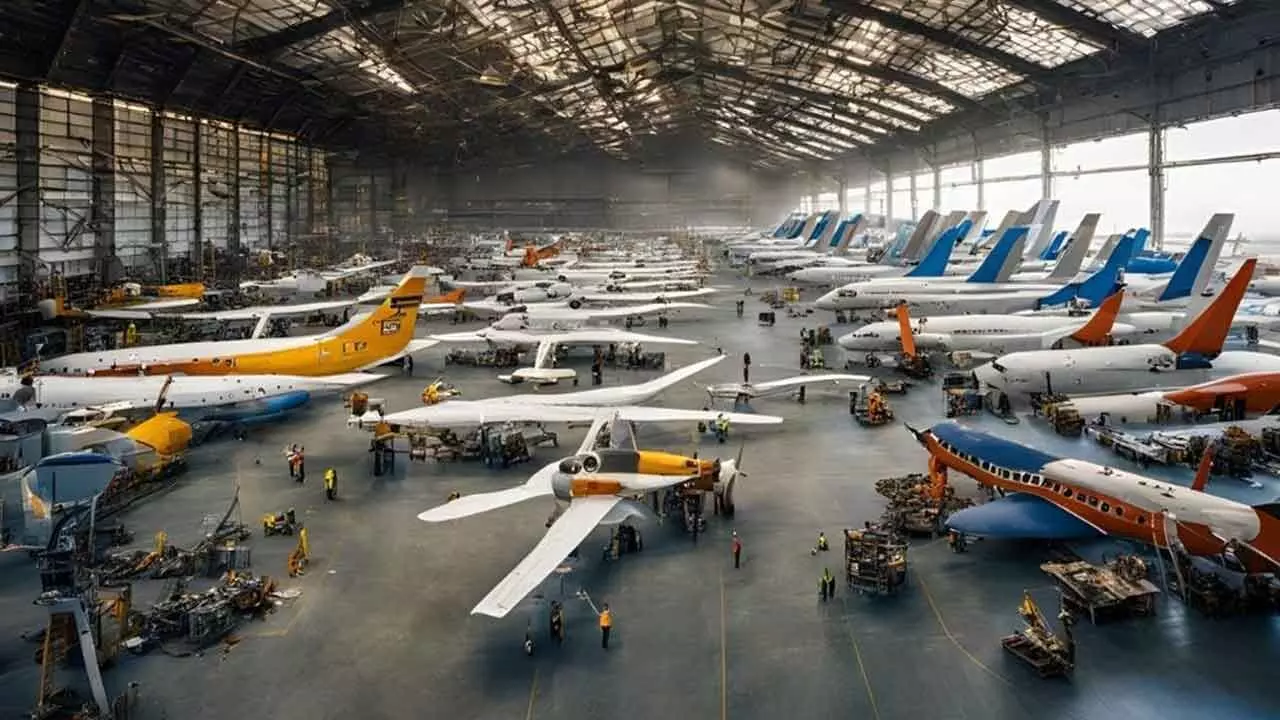Airlines Adapt To Challenges, Eye Profitability In 2025
While airlines are employing strategies like AI-driven revenue management and mergers to adapt, these challenges are expected to persist
Airlines Adapt To Challenges, Eye Profitability In 2025

Airline industry’s outlook for 2025 is a mix of strong passenger demand, capacity constraints, rising operational costs, and geopolitical hurdles. While international air connectivity is recovering, challenges such as fuel price volatility, sustainability costs, and aircraft delivery delays remain pressing concerns
The global airline industry is set for a positive 2025, with capacity and passenger demand expected to exceed pre-pandemic levels. However, key challenges such as supply chain disruptions, geopolitical uncertainties, and rising operational costs continue to shape the industry’s trajectory.
Passenger traffic remained robust in 2024, and 2025 is expected to see continued growth, albeit at a slower pace as all regions exceed pre-pandemic levels.
Global seat capacity is projected to surpass 2019 levels, yet certain regions will struggle to keep pace. Aircraft delivery delays, supply chain bottlenecks, and grounded planes due to mechanical issues continue to restrict expansion. Airlines are adapting through mergers and acquisitions, while maintaining high load factors to offset costs. Supply chain disruptions are expected to persist into 2025 and beyond, affecting fleet availability and overall network growth.
To optimise revenue, airlines are refining their booking strategies. Lower booking class availability may be restricted in regions with high demand but limited seat capacity. Artificial Intelligence (AI) is increasingly being deployed to enhance revenue management, allowing airlines to implement dynamic pricing models that maximise profitability while balancing passenger affordability.
The average age of the global fleet has increased from 13 years in 2018 to 14.6 years in 2023. While orders surged to 4,745 in 2023, delivery delays continue to hinder capacity expansion and efficiency gains.
Middle Eastern carriers have capitalised on European airlines’ restricted access to Russian airspace. Despite geopolitical tensions in Gaza, Gulf carriers have remained largely unaffected and continue to set ambitious growth targets for 2025. Their ability to retain direct routes to key Asian markets has strengthened their competitive position against European airlines facing rerouting challenges.
Ultimately, airline industry’s outlook for 2025 is a mix of strong passenger demand, capacity constraints, rising operational costs, and geopolitical hurdles. While international air connectivity is recovering, challenges such as fuel price volatility, sustainability costs, and aircraft delivery delays remain pressing concerns. Airlines must continue to innovate and adapt to these evolving conditions to sustain profitability and ensure long-term growth.
With anticipated revenues of more than $1 trillion and increasing profits in 2025, it may appear that airlines have an untroubled horizon. But the net profit margin is just 3.6 per cent and payment pressures are increasing amid numerous industry challenges.
“According to the Paris Agreement, we want less fossil fuels and so governments should tax the companies that produce it and not an industry with a 3.6 per cent profit margin that uses it,” IATA Director General Willie Walsh said.
Oil and gas companies can pay higher taxes, given their double-digit profit margins, and it is a sector that the world has agreed to curtail. The boxes are ticked, which isn’t the case with aviation. Airlines are an accelerator of economic activity and diligently working toward net zero carbon emissions despite scant resources.
Smart policy should target the energy source, not the energy user, and support aviation and all other industries that are dependent on fossil fuels in their efforts to decarbonize.
In 2025, 1,802 deliveries are anticipated, significantly short of the scheduled 2,293 aircraft. The backlog for new aircraft has reached 17,000, a record high. At present delivery rates this would take 14 years to fulfil, double the six-year average backlog for the 2013–2019 period.
Revenue, costs, and environmental performance are all affected. Despite record load factors, a lack of new aircraft means airlines cannot provide flights to satisfy demand. And because the average fleet is getting older due to a deficiency in new deliveries, maintenance costs are going up.
Older aircraft also means higher fuel burn. In 2024, fuel efficiency was broadly unchanged, a break from the usual 1.5 per cent to 2 per cent improvement. This has led to 13.6 million tons of unnecessary CO2 emissions.
Furthermore, the lease rates of narrowbody aircraft have increased more than 20 per cent compared with 2019. IATA estimates that if lease prices, interest rates, and unit maintenance costs had been unchanged compared with 2023, and if fuel efficiency had continued its downward trend, the industry’s net profit in 2024 could have been $7.5 billion higher.
“Our outlook for 2025 is positive but the profits will be hard-earned and there are numerous challenges that could easily flare up to disrupt that forecast,” Thomsen concludes.
“Our industry partners must stand alongside us. And policymakers must realize that aviation creates and supports jobs, boosts global GDP, and underpins most of the United Nations’ Sustainable Development Goals. They should work to give the industry the tools that will help it meet the extraordinary demand for its services in a sustainable manner,” Thomsen added.

